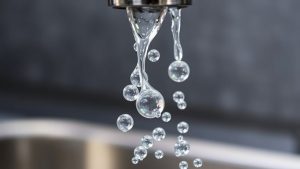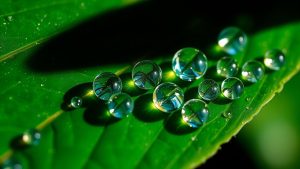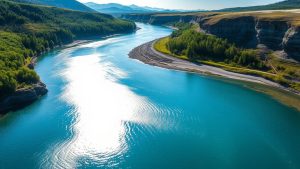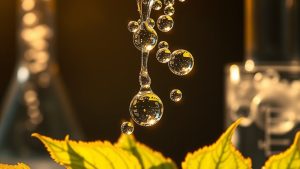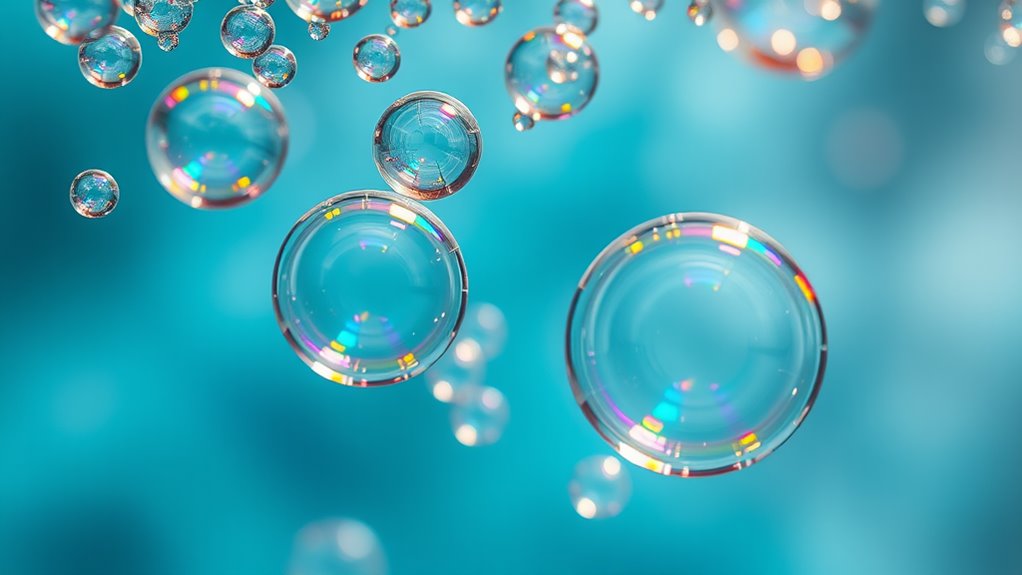
Water bubbles form when gas concentrations in water exceed equilibrium levels, leading to supersaturation. Turbulent flow, biological processes, and air entrainment contribute to this gas buildup. Once dissolved gas partial pressure surpasses ambient pressure, bubbles nucleate at surface imperfections and grow as more gas accumulates. Factors like temperature, hydrostatic pressure, and mixing intensity greatly influence bubble formation. Understanding these dynamics can help you grasp the complexities behind bubble emergence and stabilization in various environments.
When you observe bubbles forming in water, it's a fascinating interplay of physical and chemical processes at work. The phenomenon can stem from various causes, with air entrapment being one of the primary contributors. When water flows turbulently or cascades, air gets trapped within the liquid, creating conditions ripe for bubble formation. Additionally, processes like ozonation can alter the gas concentrations in the water, either promoting or hindering bubble creation based on the carrier gas employed. Biological processes, particularly the decomposition of organic matter, can also increase the gas levels in water, leading to supersaturation and subsequent bubble formation.
Bubbles in water arise from air entrapment, turbulent flow, and biological processes, creating a captivating display of nature's chemistry.
Understanding bubble nucleation is vital in grasping how these bubbles form. While homogeneous nucleation—where bubbles form evenly throughout the liquid—is rare in water due to the high pressure required, heterogeneous nucleation is much more common. This occurs at surface imperfections, such as tiny cavities on solid surfaces, where gas can accumulate and initiate bubble growth. For bubbles to form, the dissolved gas partial pressure must exceed the ambient pressure, creating a supersaturation condition. Once the gas accumulates at nucleation sites, bubbles grow as additional gas diffuses into these areas, and eventually, they detach and rise to the surface. Qualitative data plays a crucial role in understanding how reader engagement can be enhanced by tailoring content to address specific interests and needs.
Supersaturation plays an essential role in this process. It occurs when the concentration of dissolved gases exceeds equilibrium levels under specific conditions. Factors like air entrainment, ozonation, and changes in temperature or pressure can all influence this state. If not managed properly, supersaturation can lead to rapid bubble formation, which poses challenges in water treatment systems. Equipment can suffer damage, and treatment processes can be disrupted, making it necessary to monitor these conditions closely.
Physical factors considerably impact bubble formation as well. Hydrostatic pressure affects the potential for bubble emergence, with higher pressures at greater depths reducing this likelihood. Temperature increases enhance bubble formation by altering Henry's law constants and boosting diffusion rates, allowing gases to escape more readily. Additionally, the intensity of mixing can promote nucleation and growth, as more vigorous agitation provides the energy necessary to distribute gases effectively throughout the liquid.
Surface geometry also comes into play; imperfections on surfaces can influence how bubbles form and behave. Material properties, too, affect bubble stability and longevity, as the interaction between water and different materials can either facilitate or hinder bubble formation. In water treatment processes, factors like coagulation can contribute to supersaturation by converting bicarbonate to carbon dioxide, increasing gas levels. Similarly, biogeochemical reactions and mechanical processes in pipelines can introduce air or alter the conditions necessary for supersaturation.
Acidification can further exacerbate these issues, as lowering pH levels can increase CO2 concentrations in the water. Overall, the formation of bubbles in water is a complex process influenced by numerous factors, each interacting dynamically to create the intriguing phenomenon you observe.
Conclusion
To sum up, understanding how water bubbles form reveals the intricate dance between surface tension and air. Did you know that a single water molecule can form hydrogen bonds with up to four neighboring molecules? This creates a cohesive structure that allows bubbles to exist. As you explore the fascinating world of bubbles, remember that these tiny spheres are not just playful anomalies; they embody the fundamental principles of chemistry and physics that govern our everyday life.
